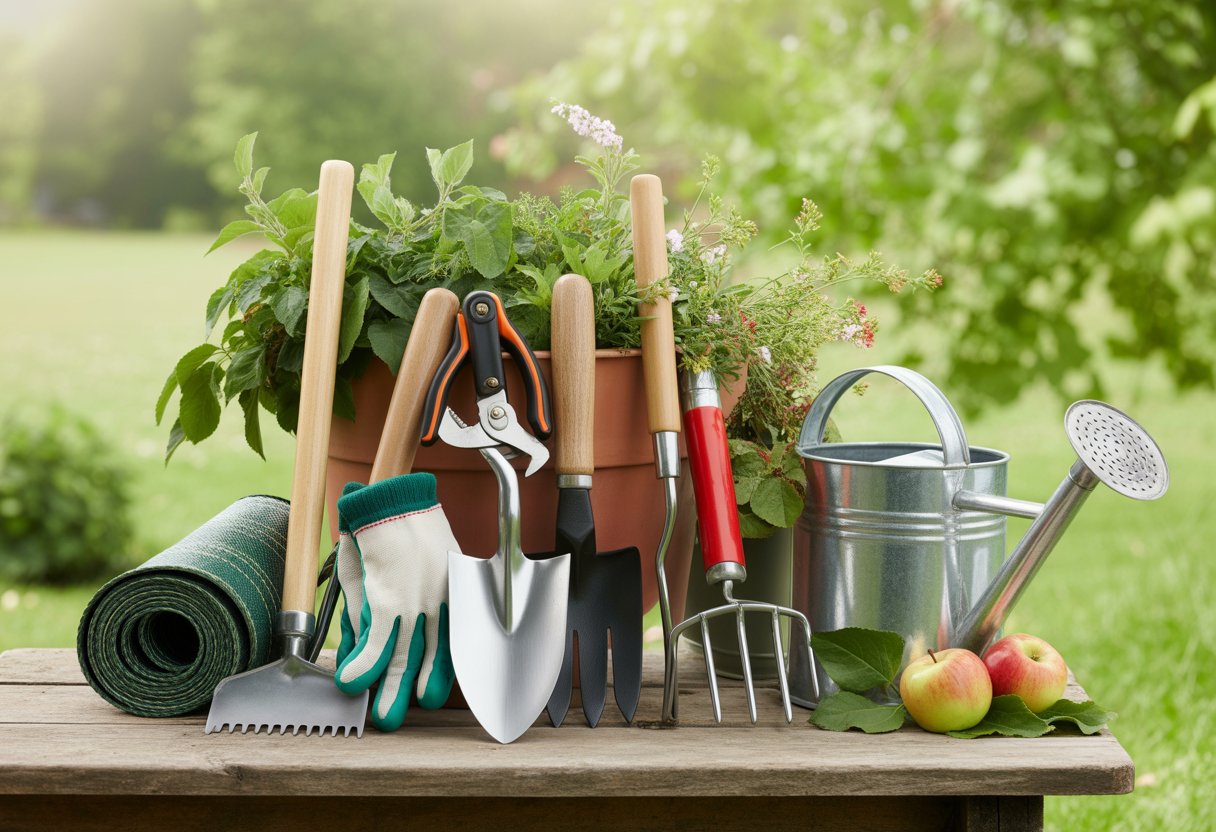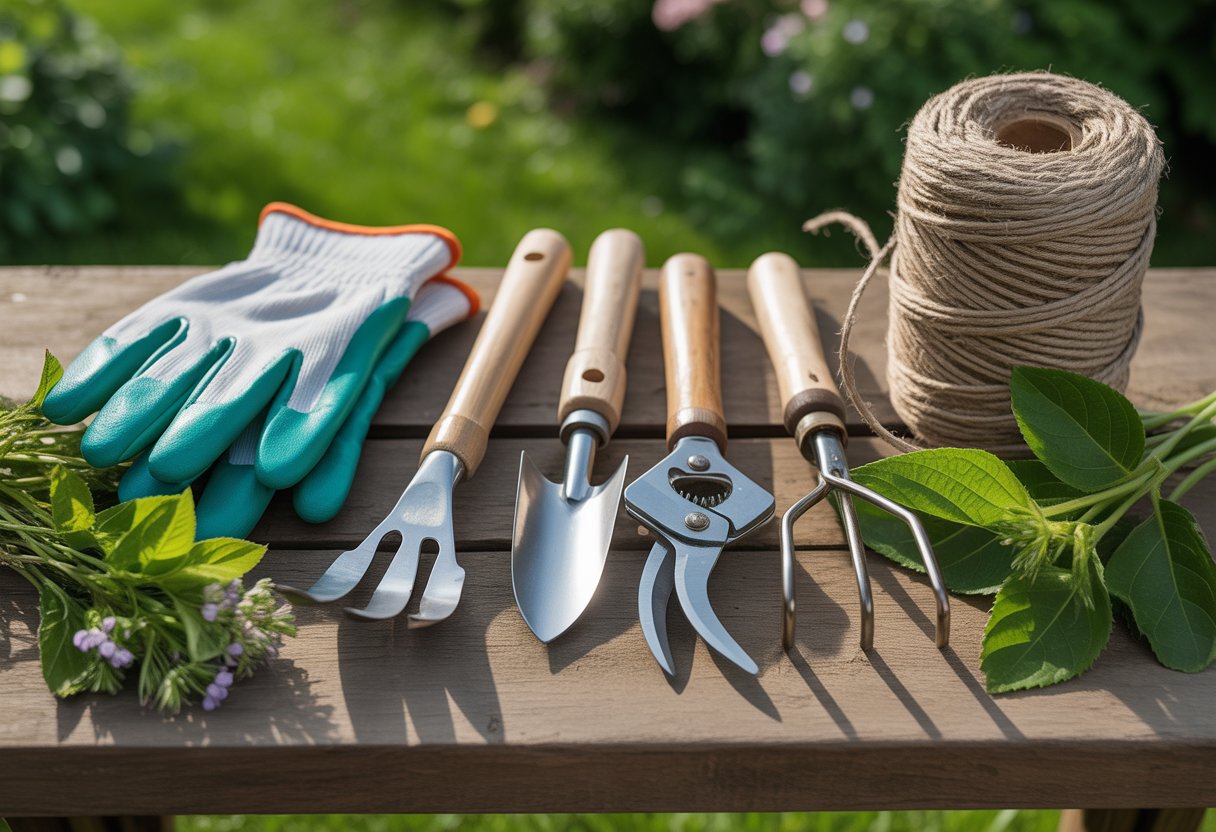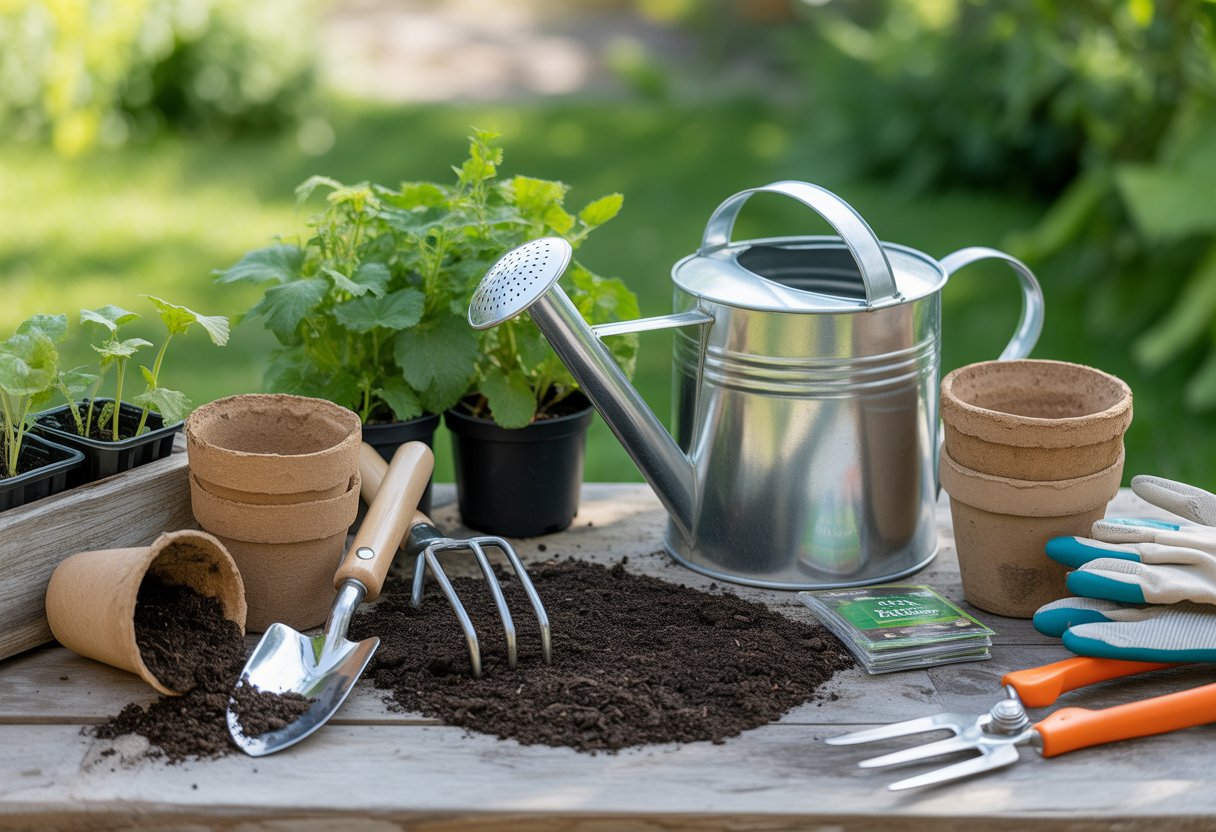Tools Every Vermont Gardener Needs for Seasonal Success and Sustainability
Gardening in Vermont isn’t exactly straightforward. The region’s climate and soil conditions really demand specific tools.
Every gardener needs reliable equipment for planting, maintaining, and harvesting through all those unpredictable seasons. If you’re not prepared, you’ll probably find yourself frustrated more often than not.

Essential tools include a sturdy trowel for digging, pruning shears for plant care, and a soil tester to monitor nutrients and pH levels. These basics help you manage tasks efficiently and keep your plants happy.
Knowing which tools actually fit Vermont’s quirks makes things smoother. Here’s a look at items that work for the region—no pointless extras or gimmicks.
Essential Hand Tools for Vermont Gardeners

Vermont gardeners need hand tools that hold up to tough soil and unpredictable weather. The right tools make planting, pruning, and protecting your plants way less of a chore.
Gloves and Protective Gear
Gloves matter—a lot. They save your hands from blisters, cuts, and just plain grime.
Nitrile or leather gloves have a solid grip and last through rough work, especially with thorny plants. Waterproof pairs come in handy during the muddy spring and soggy fall.
Kneepads and sun hats aren’t just for show. Good kneepads keep you comfortable, and a sun hat with UV protection really makes those long summer afternoons bearable.
If you’re using sharp tools, it’s wise to shield your arms. Nobody likes getting scratched up by rogue branches.
Trowels and Hand Forks
A sturdy trowel is a must for planting bulbs, seedlings, and moving flowers around. Steel blades and ergonomic handles are easier on your wrists.
Different blade sizes help you dig in cramped corners or make bigger holes when you need to. It’s a small detail, but it makes a difference.
Hand forks loosen soil and yank weeds out without trashing your plants’ roots. Pick one with strong, curved tines—hardened steel works best for Vermont’s rocky ground.
Pruning and Cutting Tools
Sharp pruning shears are a real time-saver for trimming branches, deadheading, and shaping shrubs. Bypass pruners make clean cuts, which helps plants bounce back.
Locking mechanisms on pruners keep things safe when you’re not using them. For delicate work, garden snips handle small stems and precise cuts.
Loppers are your friend when you’re facing thick branches. They’ll save your hands from wearing out. It’s worth sharpening your tools regularly if you want them to last through the season.
Soil and Planting Equipment

Prepping your soil and planting right is half the battle. The right equipment makes a massive difference, especially with Vermont’s unpredictable weather.
Shovels and Spades
A sturdy shovel is non-negotiable for digging, turning earth, and moving perennials. Most folks prefer a shovel with a tempered steel blade—it just lasts longer.
Wooden handles have a classic feel, though they might wear down faster than fiberglass or metal. Spades, on the other hand, are better for edging and digging with precision.
A flat-edged spade in galvanized steel won’t rust easily, which is a blessing in Vermont’s wet springs. Narrower blades dig deep, while wider ones handle basic jobs.
Ergonomic grips and balanced weight? Your back will thank you.
Rakes and Cultivators
Rakes are great for clearing debris and smoothing soil after tilling. Metal rakes with aluminum tines are light and rust-resistant, but if you need something tougher, steel’s the way to go.
Traditional wooden-handled rakes still have their fans, but they do need more care. Cultivators break up compacted dirt and mix in compost.
Look for cultivators with three to five steel tines—they aerate well without tearing up roots. Hand cultivators are perfect for raised beds or tight spaces.
Using both tools keeps your soil loose and ready for planting.
Raised Beds and Materials
Raised beds help extend Vermont’s short season and improve drainage. Most gardeners stick with wood, especially rot-resistant types like cedar or redwood.
Treating wood with non-toxic sealant protects it from moisture and keeps your plants safe. Galvanized steel beds are another good option—they last and look modern.
Stone or concrete blocks work too, though they don’t insulate as well. Fill your beds with rich soil and organic matter for the best shot at happy perennials and veggies.
Watering and Irrigation Tools
Watering can be tricky with Vermont’s unpredictable rain and soil. The right tools help you hit that sweet spot—enough moisture for growth, but not so much you’re wasting water.
Watering Cans and Sprinklers
Watering cans are perfect for small beds and containers where you need more control. Galvanized steel cans hold up in Vermont’s climate, but plastic ones are lighter if that’s your thing.
Adjustable spouts or rose attachments let you tweak the water flow. For bigger areas, sprinklers do the heavy lifting.
Impact and oscillating sprinklers both cover ground, but their spray patterns differ. Oscillating models work well for square or rectangular beds.
Adding a timer to your sprinkler setup means you can water early or late—less waste, less evaporation.
Garden Hoses and Attachments
A durable garden hose is key. Rubber hoses resist kinks and handle Vermont’s temperature swings better than vinyl.
A 5/8-inch hose is a good balance for most gardens—enough pressure, still flexible. Spray nozzles with different settings (jet, mist, shower) give you more options.
Quick-connect fittings make swapping out tools a breeze. Hose reels keep things tidy and help your hose last longer.
Rain Barrels for Water Conservation
Rain barrels collect runoff from your roof, giving you a backup water source. They’re a smart way to conserve water during dry stretches and cut down on runoff.
Get a barrel with a screened inlet to block debris, and an overflow outlet for when it fills up. Raising the barrel boosts water pressure for gravity-fed watering.
Linking a few barrels together is handy if your garden’s on the bigger side.
Garden Maintenance and Pest Control Essentials
Keeping your soil healthy and pests in check is half the battle in Vermont. If you want your plants to thrive, you’ve got to stay on top of both.
Fertilizers and Soil Amendments
Vermont gardeners lean heavily on fertilizers and compost to boost that rocky, sometimes acidic soil. Organic compost improves texture, holds moisture, and adds nutrients.
Spreading compost in early spring gets your beds ready. For targeted nutrition, balanced fertilizers with nitrogen, phosphorus, and potassium work for most veggies and flowers.
Slow-release formulas help reduce runoff and keep nutrients where you want them. A lot of folks use lime to dial back soil acidity, making nutrients easier for plants to absorb.
Regular soil testing helps you know which soil amendments to use. Adjusting pH and nutrient levels avoids deficiencies and keeps growth steady. Mulch is great for holding moisture and adding organic matter as it breaks down.
Managing Pests and Diseases
Effective pest control isn’t just about reacting—it’s about prevention, monitoring, and sometimes, intervention. Gardeners often use physical barriers like row covers to shield young plants from insects without reaching for chemicals.
Handpicking pests like beetles or caterpillars? That’s a classic, pesticide-free move. It’s surprisingly effective, though admittedly a bit tedious.
When pests start to threaten plant health, you might need to reach for selective insecticides or pesticides. Just make sure to pick products labeled for vegetables and certified for organic use to keep things eco-friendly.
If you time those applications when pests first appear, you usually get better results. It’s all about catching them off guard.
Some folks introduce beneficial insects—think ladybugs—for natural pest control without the nasty chemicals. Honestly, it’s pretty satisfying to see nature handle things for you.
If things get out of hand, don’t hesitate to call a professional exterminator for safe, targeted help. Regularly checking for early signs of fungal diseases or insect damage makes a world of difference.
